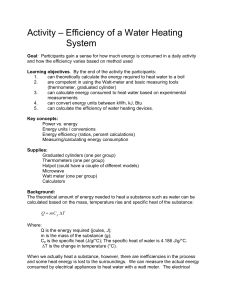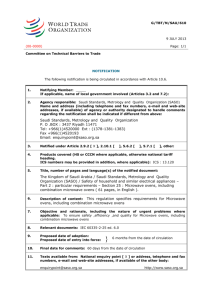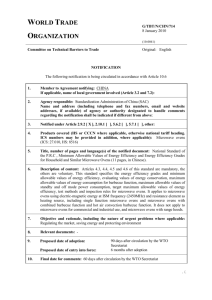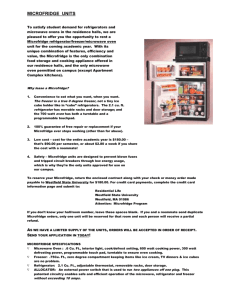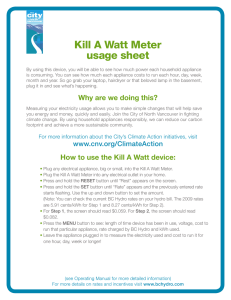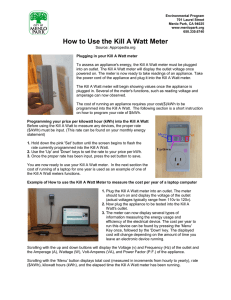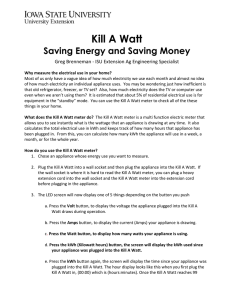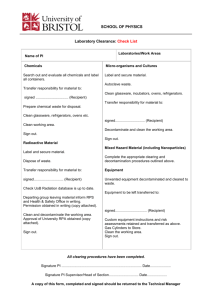Kill A Watt Organizing Activity
advertisement
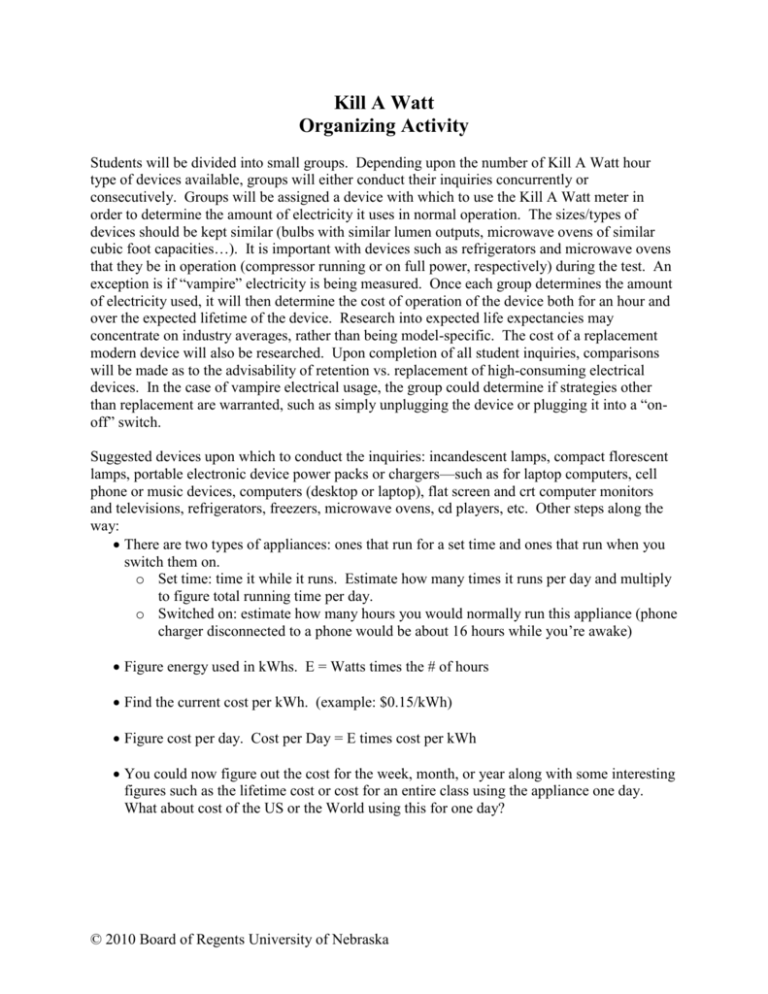
Kill A Watt Organizing Activity Students will be divided into small groups. Depending upon the number of Kill A Watt hour type of devices available, groups will either conduct their inquiries concurrently or consecutively. Groups will be assigned a device with which to use the Kill A Watt meter in order to determine the amount of electricity it uses in normal operation. The sizes/types of devices should be kept similar (bulbs with similar lumen outputs, microwave ovens of similar cubic foot capacities…). It is important with devices such as refrigerators and microwave ovens that they be in operation (compressor running or on full power, respectively) during the test. An exception is if “vampire” electricity is being measured. Once each group determines the amount of electricity used, it will then determine the cost of operation of the device both for an hour and over the expected lifetime of the device. Research into expected life expectancies may concentrate on industry averages, rather than being model-specific. The cost of a replacement modern device will also be researched. Upon completion of all student inquiries, comparisons will be made as to the advisability of retention vs. replacement of high-consuming electrical devices. In the case of vampire electrical usage, the group could determine if strategies other than replacement are warranted, such as simply unplugging the device or plugging it into a “onoff” switch. Suggested devices upon which to conduct the inquiries: incandescent lamps, compact florescent lamps, portable electronic device power packs or chargers—such as for laptop computers, cell phone or music devices, computers (desktop or laptop), flat screen and crt computer monitors and televisions, refrigerators, freezers, microwave ovens, cd players, etc. Other steps along the way: There are two types of appliances: ones that run for a set time and ones that run when you switch them on. o Set time: time it while it runs. Estimate how many times it runs per day and multiply to figure total running time per day. o Switched on: estimate how many hours you would normally run this appliance (phone charger disconnected to a phone would be about 16 hours while you’re awake) Figure energy used in kWhs. E = Watts times the # of hours Find the current cost per kWh. (example: $0.15/kWh) Figure cost per day. Cost per Day = E times cost per kWh You could now figure out the cost for the week, month, or year along with some interesting figures such as the lifetime cost or cost for an entire class using the appliance one day. What about cost of the US or the World using this for one day? © 2010 Board of Regents University of Nebraska


